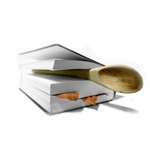-
CONDITIONING: 1. If you dried fruit, herbs, or seeds, you should condition them before storing, advises the University of Missouri Extension. To condition, or evenly distribute the remaining moisture in the food, first completely cool the dehydrated food.
-
2. Pour the dehydrated food into a large, nonporous container. Fill it no more than two-thirds full. Cover the container and keep it warm and dry.
-
3. Shake or stir the container daily to mix the contents. If you see any condensation on the lid, return the food to the NuWave Oven to finish dehydrating (and then begin the conditioning process again). Check also for spoilage. Discard the product if you see any signs of mold.
|
-
4. Continue stirring or shaking the container for 10 to 14 days. Look for condensation and spoilage each time.
-
5. Cool the dehydrated product thoroughly and package in small, airtight containers. Maintain the nutritional value, appearance and flavor of dried foods by storing them at low temperatures in low humidity.
|
 Receta How to Use a NuWave Oven to Dehydrate
Receta How to Use a NuWave Oven to Dehydrate
